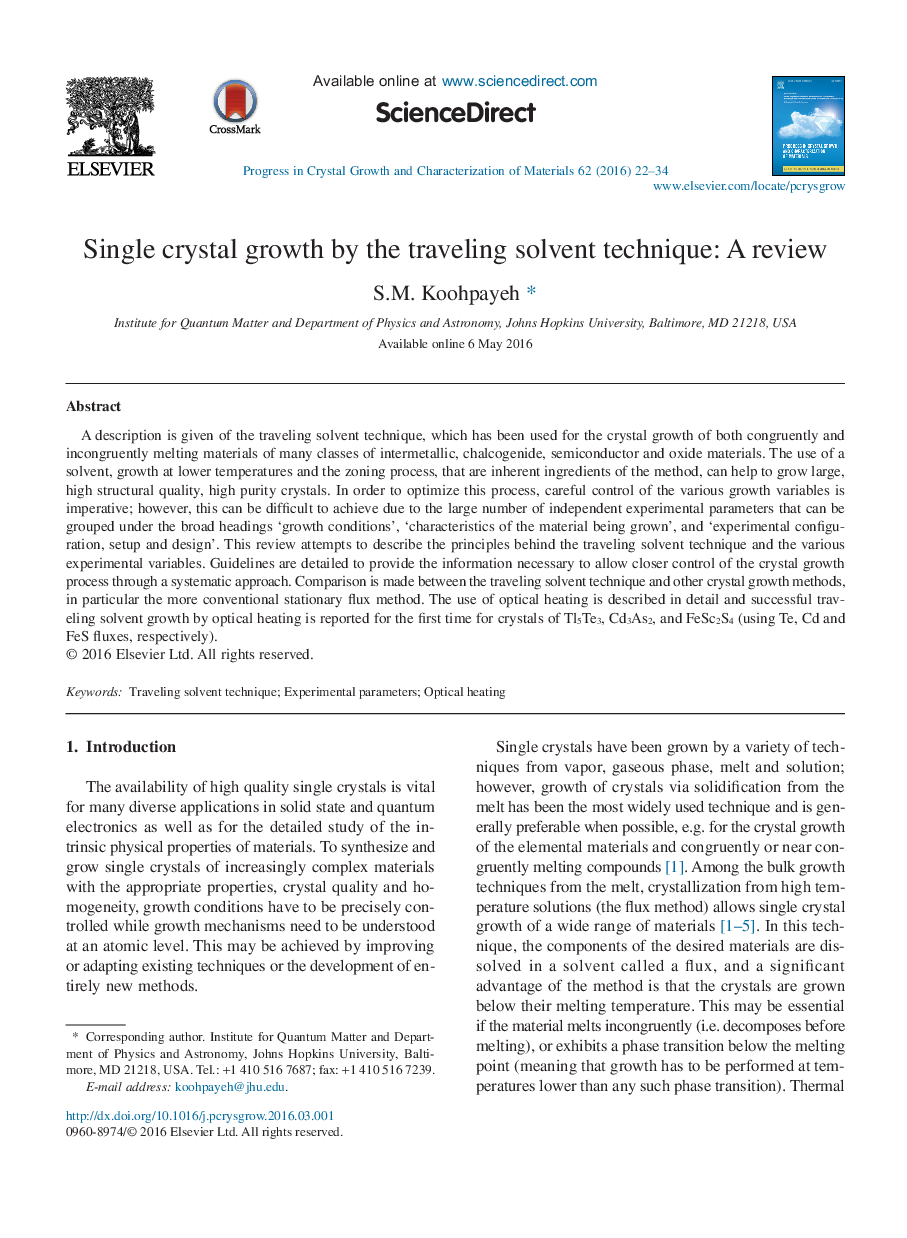| Article ID | Journal | Published Year | Pages | File Type |
|---|---|---|---|---|
| 5457118 | Progress in Crystal Growth and Characterization of Materials | 2016 | 13 Pages |
Abstract
A description is given of the traveling solvent technique, which has been used for the crystal growth of both congruently and incongruently melting materials of many classes of intermetallic, chalcogenide, semiconductor and oxide materials. The use of a solvent, growth at lower temperatures and the zoning process, that are inherent ingredients of the method, can help to grow large, high structural quality, high purity crystals. In order to optimize this process, careful control of the various growth variables is imperative; however, this can be difficult to achieve due to the large number of independent experimental parameters that can be grouped under the broad headings 'growth conditions', 'characteristics of the material being grown', and 'experimental configuration, setup and design'. This review attempts to describe the principles behind the traveling solvent technique and the various experimental variables. Guidelines are detailed to provide the information necessary to allow closer control of the crystal growth process through a systematic approach. Comparison is made between the traveling solvent technique and other crystal growth methods, in particular the more conventional stationary flux method. The use of optical heating is described in detail and successful traveling solvent growth by optical heating is reported for the first time for crystals of Tl5Te3, Cd3As2, and FeSc2S4 (using Te, Cd and FeS fluxes, respectively).
Related Topics
Physical Sciences and Engineering
Materials Science
Materials Science (General)
Authors
S.M. Koohpayeh,
